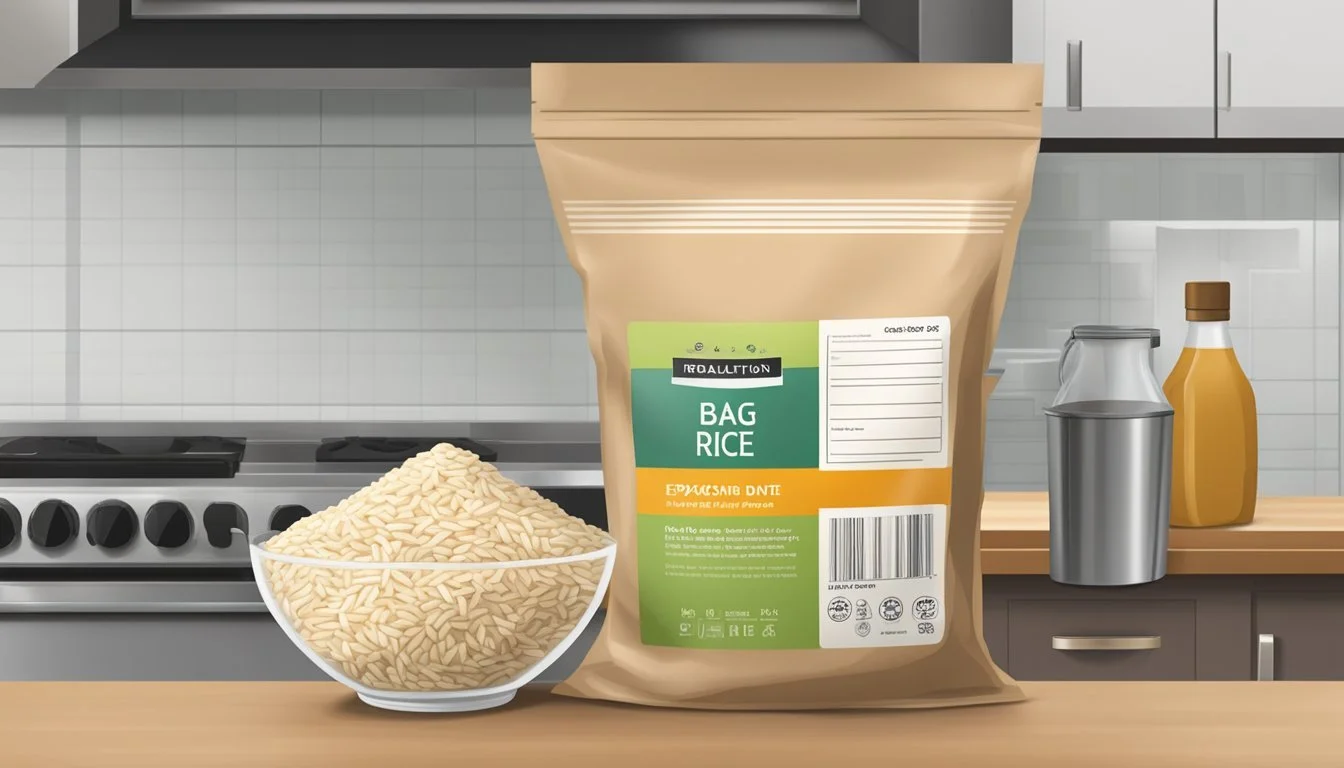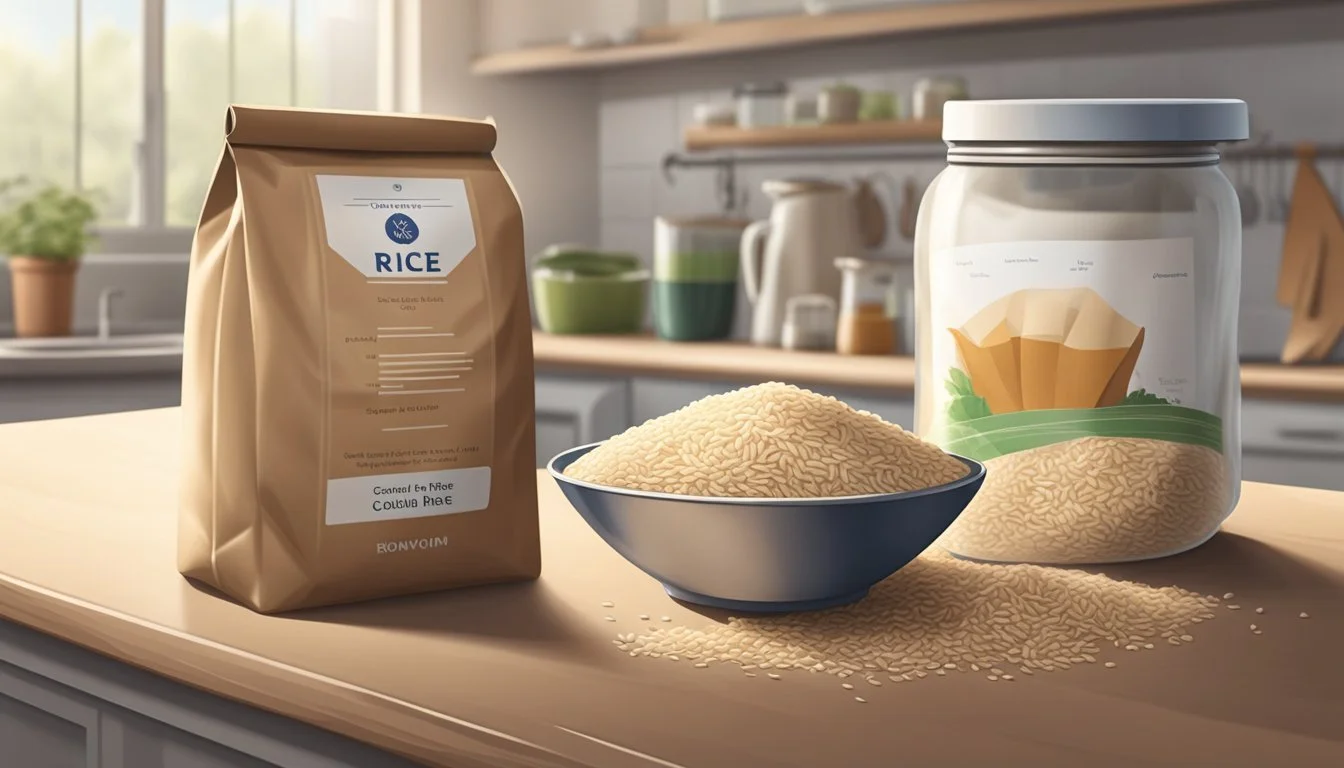Does Brown Rice Go Bad?
Shelf Life and Storage Tips
Brown rice is a nutritious alternative to white rice, but many people wonder if it has a shorter shelf life. Yes, brown rice can go bad and typically has a shelf life of six to twelve months. This is notably shorter than white rice, which can last up to two years.
The reason brown rice has a shorter shelf life is due to its higher natural oil content, which can cause it to become rancid more quickly. Proper storage, such as keeping it in an airtight container in a cool, dark place, can help prolong its freshness.
Factors such as temperature, packaging, and exposure to moisture play crucial roles in the longevity of brown rice. Discard any rice that shows signs of mold or has an off smell to ensure food safety.
Understanding Brown Rice
Brown rice is a nutritious whole grain that contains essential nutrients and provides numerous health benefits. In comparison to white rice, it has a richer nutrient profile and maintains more natural oils and fiber content, making it a better option for a balanced diet.
Nutritional Profile
Brown rice is unrefined, retaining both the bran and germ, which are often removed during the processing of white rice. This characteristic results in higher fiber content, aiding in digestive health and providing a feeling of fullness.
Nutrients found in brown rice:
Fiber: High in dietary fiber, which supports digestive health.
Vitamins and Minerals: Contains magnesium, phosphorus, selenium, thiamine, and niacin.
Antioxidants: Includes beneficial antioxidants that help reduce the risk of chronic diseases.
The natural oils present in brown rice contribute to its slightly nutty flavor and increased fat content compared to white rice. Its low moisture content and whole grain status make it a valuable addition to a healthy diet.
Comparison with White Rice
White rice differs from brown rice primarily in its processing. It is milled to remove the bran and germ, resulting in a grain that has a longer shelf life but fewer nutrients.
Key Differences:
Fiber and Nutrient Content: White rice has significantly less fiber and fewer minerals than brown rice.
Health Benefits: Brown rice’s higher fiber and nutrient content support better heart health, weight management, and digestion.
Shelf Life: White rice lasts longer due to reduced oil content, while brown rice’s natural oils can cause it to spoil faster if not stored correctly.
In essence, brown rice’s whole grain nature and nutrient density contribute to its status as a healthier option compared to white rice.
Proper Storage Techniques
Proper storage of brown rice is crucial to maintain its freshness and prevent spoilage. The two main aspects to consider are the ideal conditions for storage and the appropriate containers and packaging to use.
Ideal Conditions for Storage
Brown rice should be stored in a cool, dark, and dry place. Temperature fluctuations can degrade its quality, so maintaining a consistent environment is key. The pantry is often the best option, as long as it meets these criteria. Avoid places like kitchen cupboards that are prone to temperature changes and exposure to light.
Moisture is an enemy of brown rice, leading to mold and spoilage. Ensuring the storage area is dry will extend the rice's shelf life. Ideally, the rice should be consumed within six months if stored in optimal conditions.
Containers and Packaging
Storing brown rice in airtight containers can significantly prolong its shelf life. Once the original package is opened, transferring the rice to a sturdy container with a good seal is essential. This prevents exposure to air and moisture, which are detrimental to the rice.
Plastic or glass containers with tight-fitting lids are excellent choices. Labels and markers can be used to keep track of purchase dates, helping to ensure that older rice is used first. For cooked brown rice, refrigeration in airtight containers can keep it fresh for 4 to 6 days, while the freezer can extend its life up to six months. Proper sealing and removing as much air as possible from freezer bags are effective strategies for freezing.
Shelf Life and Spoilage
Brown rice's shelf life and spoilage depend on various factors, including storage conditions and packaging. Recognizing signs of spoilage is crucial to ensure food safety and quality. Proper storage practices can significantly extend its shelf life.
Identifying Signs of Spoilage
Brown rice can show specific signs when it has gone bad. Mold is a clear indicator and may appear as green, blue, or black spots. If any mold is visible, the rice should be discarded immediately. Also, an off-putting, sour smell is a common sign of spoilage.
Changes in texture and color are also telltale signs. Bad brown rice may feel harder or become excessively dry. The presence of any unusual or sour flavor after cooking indicates that it has degraded and should not be consumed. Always check for these spoilage signs before using brown rice to avoid any health risks.
Factors Affecting Shelf Life
Several factors influence how long brown rice lasts. Its higher oil content compared to white rice makes it prone to spoilage. Proper storage in a cool, dark, and dry location is essential. An airtight container is recommended once the original packaging is opened to minimize exposure to moisture and air.
Storing brown rice in the refrigerator or freezer can extend its shelf life, especially in humid climates. Heat, light, and moisture can cause brown rice to spoil faster. Checking the expiration or best before date is also crucial. Knowing these factors helps maintain the rice's quality and reduces the risk of consuming spoiled rice.
Handling and Preparation
Proper handling and preparation of brown rice are essential to preserve its freshness and maximize its nutritional benefits. Knowing the best cooking methods and how to store cooked rice can enhance both usability and longevity.
Cooking and Using Brown Rice
Brown rice should be rinsed thoroughly under cold water before cooking to remove any debris.
For each cup of brown rice, use 2 1/2 cups of water. Bring the water to a boil, add the rice, then reduce to a simmer and cover.
Cook for about 45 minutes, or until the rice is tender and the water is absorbed. Varieties of dishes, such as fried rice, salads, and soups, can integrate brown rice. Many healthy recipes highlight brown rice for its nutty flavor and nutritional profile.
Using a microwave, brown rice is reheated by adding a small amount of water and covering it to maintain moisture. Pre-cooked rice can also be frozen for later use. Thaw it in the refrigerator before reheating to retain texture and freshness.
Maximizing Longevity After Cooking
Cooked rice should be stored in airtight containers and refrigerated promptly to prevent bacterial growth. Brown rice lasts about 4-6 days in the refrigerator. For longer storage, freezing is recommended.
Spread the freshly cooked rice on a baking sheet to cool rapidly before transferring to freezer-safe bags or containers. Frozen rice can be kept for up to six months without significant quality loss.
When reheating, ensure the rice is heated thoroughly to at least 165°F. This prevents any potential foodborne illness. Incorporating leftover brown rice into recipes like fried rice or casseroles can add a nutritious element without compromising on flavor.
Health and Safety Considerations
When storing and consuming brown rice, it's crucial to be aware of potential health risks. Proper storage practices can help prevent food poisoning, and knowing how to identify signs of contamination can ensure the rice remains safe to eat.
Preventing Food Poisoning
To avoid food poisoning, it is critical to store brown rice in cool, dark, and dry locations. The oils in the bran can become rancid if exposed to heat, moisture, or air. Using airtight containers can help limit exposure to oxygen and prevent spoilage.
When brown rice is cooked, it should be consumed promptly. Bacillus cereus, a harmful bacterium, can thrive in cooked rice if left at room temperature for too long. To reheat rice safely, add a small amount of water, cover, and heat thoroughly. This can help to reduce the risk of bacterial contamination.
Recognizing Contamination
Recognizing signs of contamination is essential to prevent health issues like nausea and diarrhea. Brown rice may exhibit mold, identified by green, blue, or black spots. Moldy rice should be discarded immediately as it poses a significant health risk.
Spoiled rice can also appear oily, stale, or emit an off smell. Bugs and insects are another potential contaminant and can indicate improper storage. If any signs of contaminants are observed, the rice should not be consumed. Ensuring the rice is stored in clean and dry conditions can minimize these risks.






